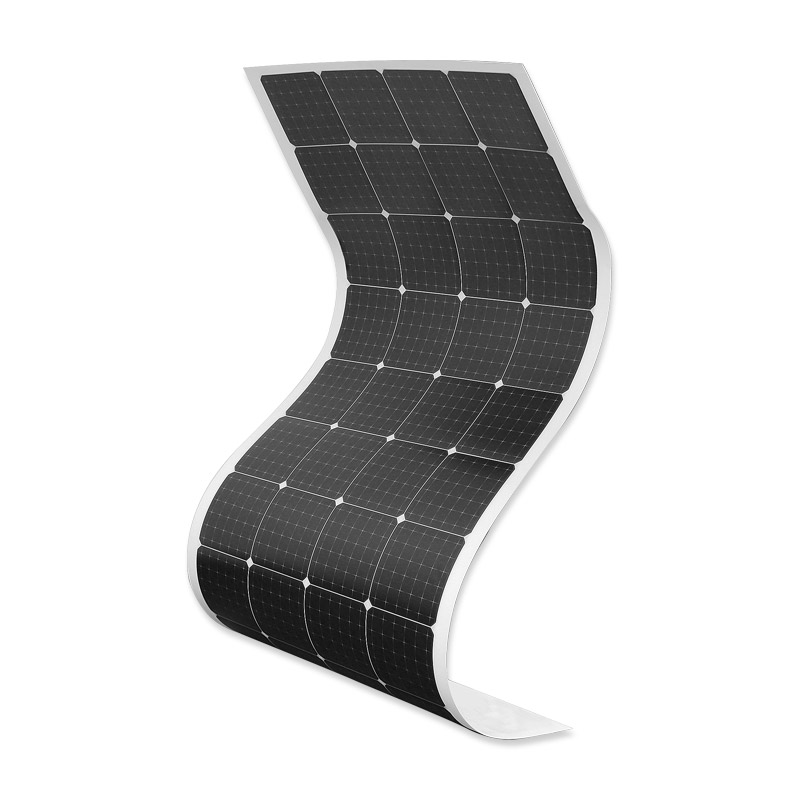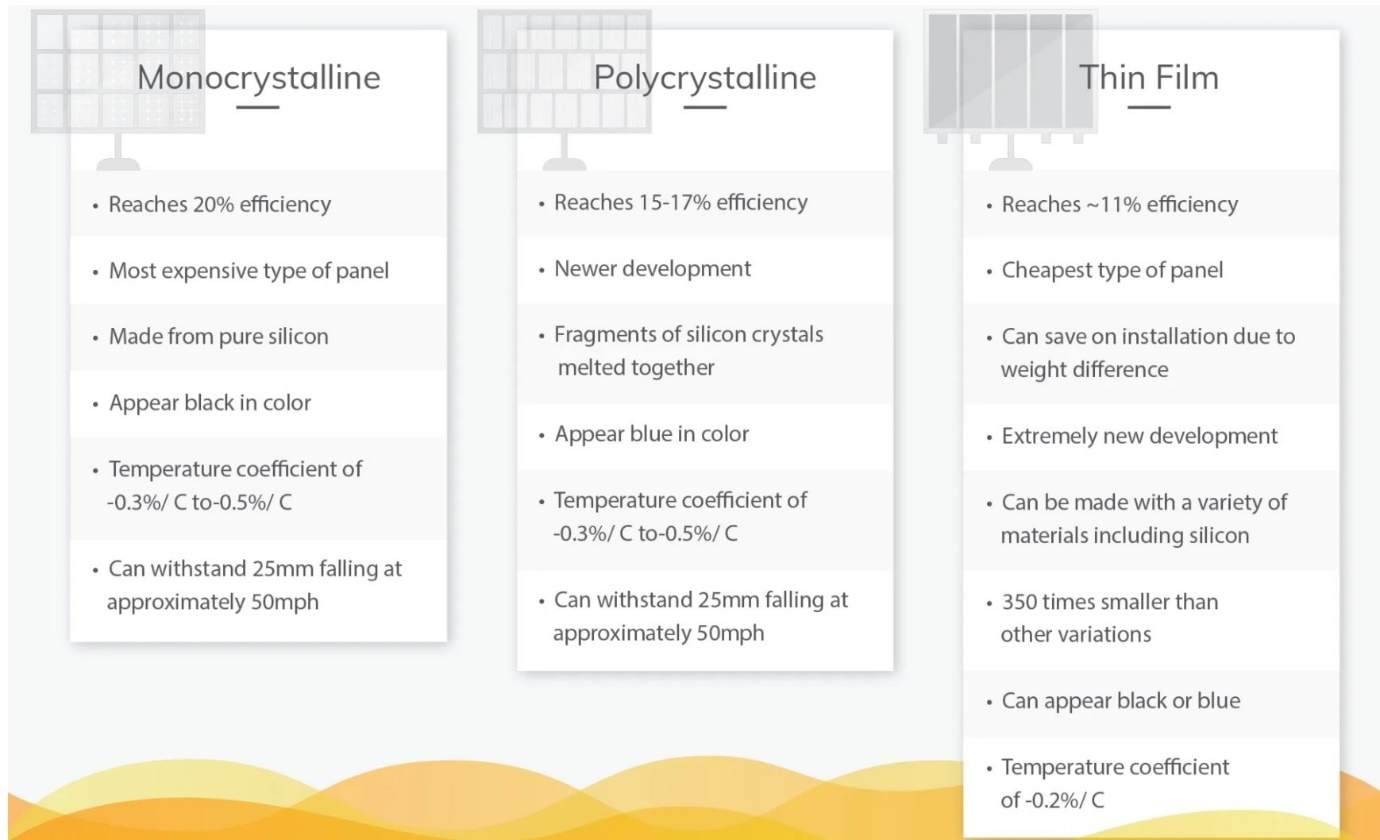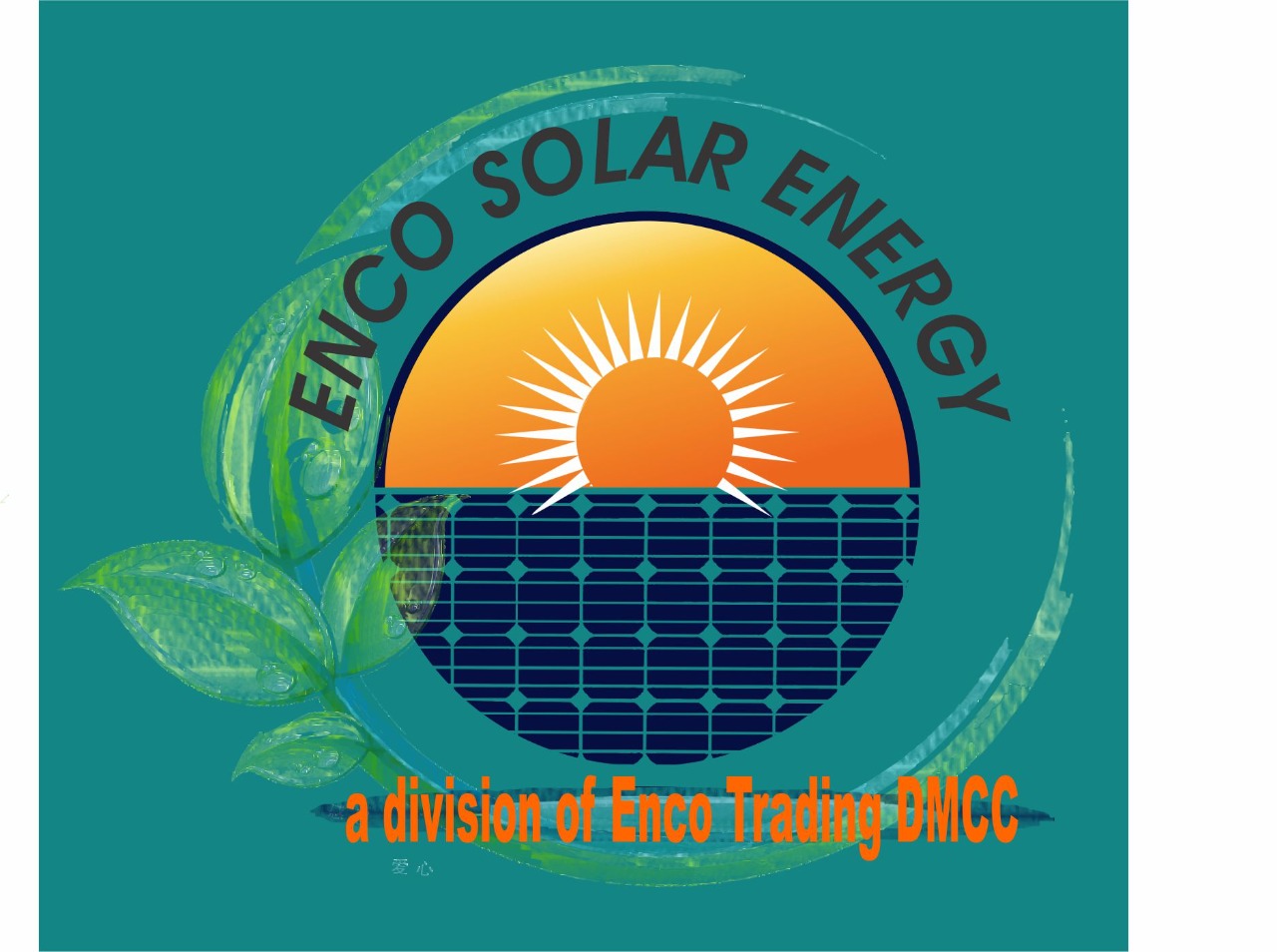THE MAIN TYPES OF SOLAR PANELS
THE MAIN TYPES OF SOLAR PANELS
MONOCRYSTALLINE SOLAR PANELS
Monocrystalline panels are the oldest most developed type of Solar panels. As the name suggests, Monocrystalline Solar Panels are made from single (Mono) crystal (crystalline) silicon solar cells. To make these solar cells, pure silicon is formed into bars and cut into wafers. During this process, the cell edges are cut off, smoothen, and rounded, to help the solar cells produce even more electricity. Although quite wasteful and time consuming, this gives the monocrystalline cells a recognizable appearance.
Manufactured from the highest purity of silicon, Monocrystalline Solar panels are a premium panel. Although Monocrystalline cells are more expensive, they tend to last longer, and have higher efficiencies. As the cells are composed of a single crystal, they have a higher power output too. In addition, Monocrystalline cells appear black and uniform in finish. Making them the prime choice for anyone looking for a modern black solar panel.
Examples of brands which manufacturer this type of solar panel include JA Solar, Trina Solar, Longi Solar and QCELL.
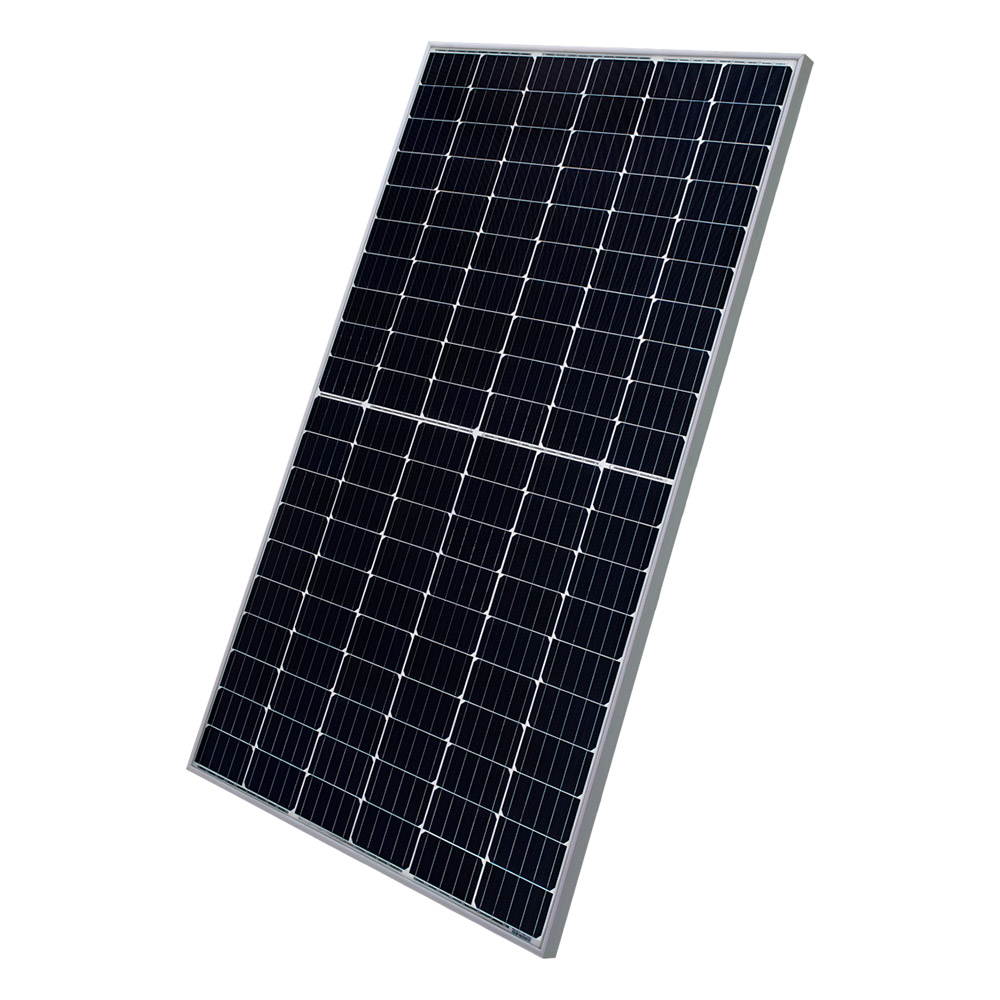
POLYCRYSTALLINE SOLAR PANELS
Also referred to as “multi-crystalline” panels, Polycrystalline are often considered the mid-range panel. Although less efficient, Polycrystalline Solar panels are the more affordable option.
Just like monocrystalline solar panels, polycrystalline cells are made from silicon. However, as the name suggests, polycrystalline cells are made from many (Poly) fragments of silicon crystal melted together. For this reason, Polycrystalline solar panels have a lower efficiency and short lifespan. Meaning they don’t generate as much electricity from the sun compared to Monocrystalline panels for as long either. This is because there is less freedom for the electrons to move, as there are many crystals in each cell.
Polycrystalline panels are made by melting raw silicon together and pouring it into a square mold to make wafers. Unlike their Monocrystalline rivals, polycrystalline cells do not require each of the four sides to be cut. This is better for the environment as it results in less waste. Overall, the process is faster and cheaper than manufacturing monocrystalline panels. These wafers are then assembled together to form a polycrystalline panel.
Polycrystalline cells can be identified by their blue finish, rectangular shape, and speckles. They appear blue and speckled, as they contain many crystals in each cell and because of the way the sunlight reflects off these crystals.
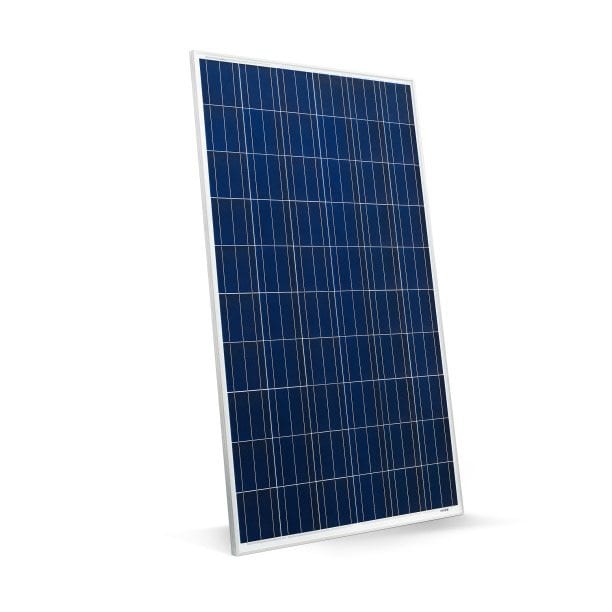
THIN-FILM SOLAR PANELS
Unlike monocrystalline and polycrystalline solar panels, thin-film solar panels are thin, flexible, and low in profile. This is because the cells within the panels are roughly 350 times thinner than the crystalline wafers used in monocrystalline and polycrystalline solar panels.
Thin-film solar panels are manufactured from layers of semiconducting materials, such as silicon, cadium telluride, and copper indium gallium selenide. The semi-conductor layer is placed between transparent conducting layers, with a layer of glass on top, that helps to capture sunlight. Although silicon is sometimes used to make thin-film solar panels, it is not the same solid silicon wafers. Rather, it is a non-crystalline type of silicon.
Thin-film solar panels tend to have lower efficiencies, and power capacities compared to crystalline panels. With efficiencies reaching around 11 percent, they require a lot more roof space to generate a large amount of solar energy. They also tend to degrade more quickly compared to crystalline panels, resulting in the shortest of warranties.
Despite this, thin-film panel still have their place in the solar industry. As thin-film panels are more flexible, they can be used for a diverse range of applications. Including being molded into shingles, or solar roof tiles, so property owners who don’t like the appearance of solar panels can still go solar.
